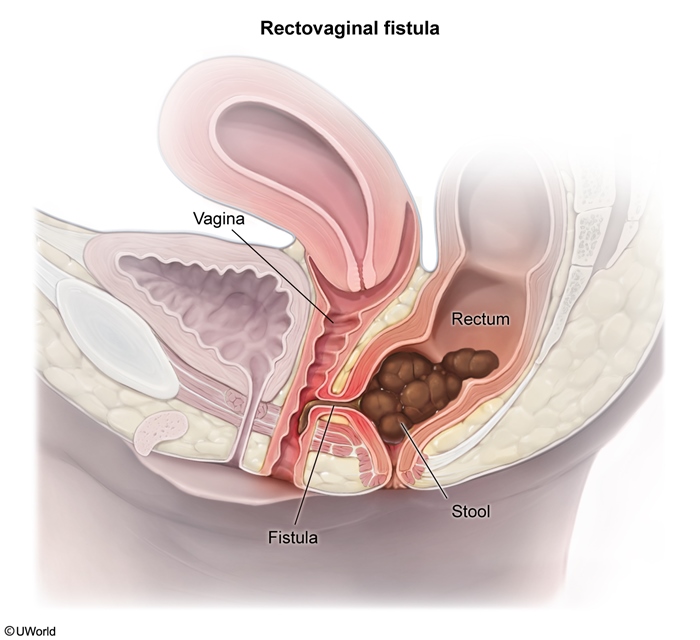Rectovaginal Fistula
Article Sections
Introduction
A rectovaginal fistula (RVF) is an aberrant connection between the rectum and the vagina, allowing fecal matter to pass into the vagina.
Pathophysiology
An RVF (Figure 1) develops within the rectovaginal septum, creating a pathologic connection between the rectum and the vagina that results in the direct passage of fecal matter into the vagina. RVFs are classified relative to the anal dentate line:
- Low (anovaginal): fistulas that occur below the dentate line and are more likely to be associated with occult anal sphincter injuries
- High (rectovaginal): fistulas that occur cephalad to the dentate line
Fistulization occurs with prolonged pressure, inflammation, infection, direct (surgical) injury, or malignancies. Therefore, the most common risk factors include:
- Obstetric injury: prolonged and obstructed labor leading to ischemic necrosis of the rectovaginal septum, third- and fourth-degree perineal lacerations (ie, obstetric anal sphincter injuries [OASIS] increase the risk for low RVFs), forceps-assisted vaginal deliveries, and episiotomies
Continue Learning with UWorld
Get the full Rectovaginal Fistula article plus rich visuals, real-world cases, and in-depth insights from medical experts, all available through the UWorld Medical Library.
Figures

Figure 1
Tables
Table 1